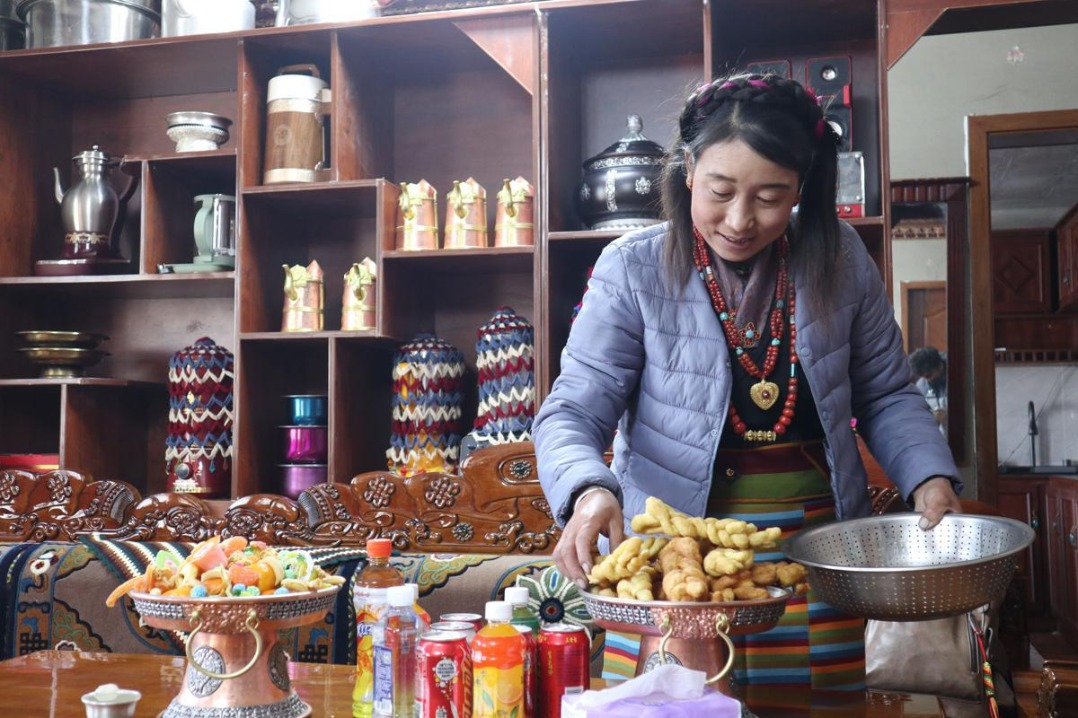Country's malaria elimination achievements, innovations lauded

With zero domestic cases since 2017, head of Asian anti-malaria alliance says China's experience, expertise helpful to others

Doctor Sarthak Das, CEO of the Asia Pacific Leaders Malaria Alliance's (APLMA) Joint Secretariat, said in an interview on Tuesday that China's sustained national commitment to malaria control, tailored interventions and robust, science-based response mechanism underpinned the elimination of the disease in the country.
Annual malaria cases in China dropped from 30 million in the 1940s to zero in 2017, which Das said is "the most momentous accomplishment" in the global battle against the historic scourge.
"The ultimate success, as the Chinese example shows us, depends on systems," he said, adding that China's system doesn't only depend on monitoring "it's a system that also involves reporting, analyzing data in real time and identifying hot spots. It also is a system that can communicate from a provincial capital to a capital city, about where commodities and resources should be shifted."
Das said the overarching factor in wiping out malaria was the national commitment, visible at multiple levels of leadership and across different arms of government.
One milestone occurred in 2010 when 13 ministerial level government departments, including health and science authorities and financial and public regulators, joined forces to end malaria.
"Looking at examples of elimination efforts across the world, if you don't have that constellation and alignment, you won't achieve the goal," he said.
Since China began intensifying malaria control efforts in the 1950s, the toll extracted by the disease has gradually been reduced, prompting authorities to roll out more targeted and tailored interventions.
"Some maybe deal with high-risk populations, some maybe deal with border-related issues," Das said. "The solutions are not all the same."
Strong support for scientific research also played a significant role, which culminated in a project starting in 1967 that united 500 scientists from 60 institutions in the pursuit of treatments.
The project eventually led to the discovery of artemisinin in the 1970s, Derived from the qinghao, or sweet wormwood plant, it has become the core compound in the most effective and widely used anti-malaria drugs. In 2015, pharmaceutical chemist, Tu Youyou, was awarded the Nobel Prize in Physiology or Medicine for her contribution to the breakthrough.
China was also one of the first countries to extensively test the use of insecticide-treated nets, another effective preventive tool in reducing incidence rates.
"Another critical thing is the prioritization of making malaria easy to see," Das added. "And that takes us to the 1-3-7 Strategy."
Created by Chinese disease control workers, the strategy requires domestic health facilities to report a case within a day, confirm a case and determine its risk of spreading within three days, and implement response measures within seven days.
The country's experience has shown that even in the most vulnerable regions, the strategy can be effectively implemented, given sufficient political will.
One of the most difficult areas to tackle was the southwestern province of Yunnan. Its lush mountains and plantations make fertile breeding grounds for mosquitoes that can harbor and transmit malarial parasites.
As the risk of imported malaria cases remains a challenge, Das applauds border controls in remote regions like Yunnan for their emphasis on sustained monitoring, which is tied to the 1-3-7 clear methodology, enabling the enforcement of swift and decisive action.
"China has stepped up malaria surveillance in at-risk areas and is engaged in regional malaria control initiatives," he said. "This is a major lesson for all countries fighting the disease in remote and rural areas."
Das said that it is critical to learn lessons from China, as malaria cases are again rising in the most affected countries for the first time in more than a decade.
In terms of stepping up cross-border cooperation on malaria control, he said that while it is important to disseminate innovative methodologies, and share expertise, the key is to adapting existing tools to domestic circumstances, and building capacity at different levels.
As an international linchpin in the cause of malaria elimination, Das said APLMA is committed to "making sure that the best solutions can be adapted to the context, and when questions arise, there are people around who can guide, troubleshoot and help navigate the complexity."
He added the APLMA and its partner, the Asia Pacific Malaria Elimination Network, will continue to support countries in the region following their own paths toward malaria elimination by 2030.
- Record ocean heat in 2025: a deepening climate challenge
- Beijing offers free two-dose bivalent HPV vaccination for girls
- Hunan students craft opera headpieces from recycled materials
- Haidian police crackdown on campus fraud with new safety model
- Several BRICS countries to conduct maritime military exercises near South Africa
- Shanghai to launch year-long global food festival in 2026




































